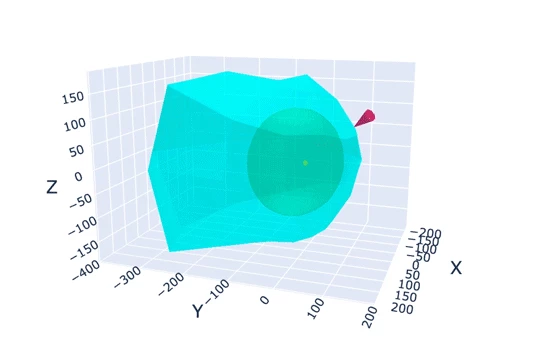As a massive bubble encasing the solar system that stretches across tens of billions of miles and protects us from harmful interstellar radiation, there is a lot for us to learn about the heliosphere. Scientists have uncovered some new details around this complex patch of the universe, by producing the first ever map of its boundary, where solar winds are brought to a stop by the interstellar medium.
The groundbreaking map was produced by scientists at Los Alamos National Laboratory (LANL), who tapped into a decade's worth of data collected over an entire solar cycle between 2009 and 2019. This intel was gathered by NASA’s Earth-orbiting Interstellar Boundary Explorer (IBEX) satellite, which was launched in 2008 with the intention of studying the interactions between the interstellar medium and solar winds that emanate outwards from the Sun at up to one million mph (1.6 million km/h).
These solar winds are made up of protons, electrons and alpha particles and give shape to the bubble-like heliosphere. The boundary layer around the heliosphere is known as the heliosheath, and within that sits the heliopause, the very edge of this boundary layer.
One of the functions of the IBEX satellite is to detect particles coming from the heliosheath, and among those is a byproduct of collisions between the solar wind and interstellar wind called energetic neutral atoms (ENAs). The stronger the solar wind as it crashes into the heliosheath, the higher the count of ENAs that the IBEX satellite will detect.
“The solar wind ‘signal’ sent out by the Sun varies in strength, forming a unique pattern,” explains Dan Reisenfeld, lead author on the paper. “IBEX will see that same pattern in the returning ENA signal, two to six years later, depending on ENA energy and the direction IBEX is looking through the heliosphere. This time difference is how we found the distance to the ENA-source region in a particular direction.”

The scientists liken this to the way bats use sonar to map their environment, sending out pulses in each direction and tracking how long they take to return to gauge their surroundings. But instead of using sonar pulses to map a cave, the team used the Sun's solar wind to build the first 3D map of the heliosphere.
This new map shows that the shortest distance between the Sun and the heliopause, in the direction facing the interstellar wind, is 120 astronomical units (one astronomical unit is the distance from the Earth to the Sun). In the opposite direction, the heliopause stretches at least 350 astronomical units from the Sun.
“Physics models have theorized this boundary for years,” says Reisenfeld. “But this is the first time we’ve actually been able to measure it and make a three-dimensional map of it.”
The video below provides an overview of the research, which was published in the Astrophysical Journal.
Source: Los Alamos National Laboratory




